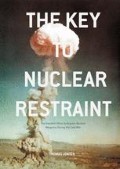Abstract
This chapter examines how the findings of the present study shed light on leading IR theories in nuclear proliferation and non-proliferation.
Access this chapter
Tax calculation will be finalised at checkout
Purchases are for personal use only
Notes
- 1.
‘US POLICY TOWARD SCANDINAVIA (DENMARK, NORWAY, and SWEDEN), 6 April 1960, RG 273, NSC 6006/1, Box 51, NA.
- 2.
A. E. Levite, ‘Never Say Never Again: Nuclear reversal Revisited’, International Security, 27 (3), Winter 2002–2003.
- 3.
Svensk atomenergipolitik. Motiv och riktlinjer för statens insatser på atomenergiområdet 1947–1970. Industridepartementet 1970. (Stockholm, The Ministry of Industry 1970).
- 4.
Sagan 1996/97; Sagan 2011.
- 5.
See for example, K. N. Waltz, Theory of International Politics (Reading, MA: Addison-Wesley, 1979); J. Mearsheimer, The Tragedy of Great Power Politics (New York: Norton, 2001); T. V. Paul, Power versus Prudence: Why Nations Forgo Nuclear Weapons (Montreal: McGill-Queen’s University Press, 2000).
- 6.
See for example, Lavoy PR. 1993. ‘Nuclear Myths and the Causes of Nuclear Proliferation’, Security Studies. 2 (3&4), 192–212; Liberman P. 2001. ‘The Rise and Fall of the South African Bomb’, International Security 26 (2), 45–86.
- 7.
See for example P. Katzenstein, The Culture of National Security: Norms and Identity in World Politics (New York: Columbia University Press, 1996); 1996; N. Tannenwald, The Nuclear Taboo. The United States and the Non Use of Nuclear Weapons since 1945 (Cambridge: Cambridge University Press, 2007); M. R. Rublee, Nonproliferation Norms. Why states choose nuclear Restraint (Athens: University of Georgia Press, 2009).
Author information
Authors and Affiliations
Copyright information
© 2016 The Editor(s) (if applicable) and The Author(s)
About this chapter
Cite this chapter
Jonter, T. (2016). Conclusions. In: The Key to Nuclear Restraint. Palgrave Macmillan, London. https://doi.org/10.1057/978-1-137-58113-6_7
Download citation
DOI: https://doi.org/10.1057/978-1-137-58113-6_7
Published:
Publisher Name: Palgrave Macmillan, London
Print ISBN: 978-1-137-58112-9
Online ISBN: 978-1-137-58113-6
eBook Packages: HistoryHistory (R0)

